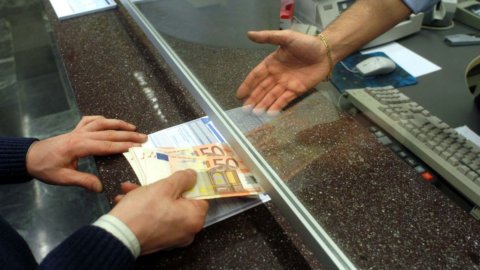Today, April 17, in the splendid setting of Vinitaly, UniCredit organized a workshop to present the sector operators with theIndustry Book 2018, the study that UniCredit conducts annually on the trends, competitive dynamics and prospects for development and growth in the sector.
At the same time, this morning Gianni Franco Papa (General Manager of UniCredit), Ernesto Abbona (President of UIV - Unione Italiana Vini), Sandro Boscaini (President of Federvini - Italian Federation of Industrial Producers, Exporters and Importers of wines), Alessio Planeta (President of Assovini Sicilia) and Federico Terenzi (president Agivi – Association of Young Italian Wine Entrepreneurs) have signed a framework agreement, with a strong focus on strengthening international business, to support wine companies with greater growth potential.
Returning to the report, starting from "macro" data on phenomena concerning the consumption and production of wine on a global scale, the study identifies, data in hand, numerous trends and evidence at national and regional level and draws a perspective picture on crucial dynamics such as the trend of export flows.
Production volumes: The OIV (International Organization of Vine and Wine) estimates world production in 2017 at 247 million hectoliters (-8% y/y). In this picture. Italy closed 2017 with a production of around 46 million hl.
consumption: Over the past 15 years global wine consumption has increased from 228 to 242 million hl. In particular, in 2016 there was a growth of 6,1% compared to the previous year, thanks also to the contribution from the emerging South American and Asian economies. China has more than doubled its consumption, while the United States is now the leading world market, with over 30 million hl accounting for 24% of total consumption. Italy is in third position for consumption, with over 21 million hl. To date, for world demand, the definitive data for 2017 are not yet available, but the OIV estimates a range between 240,5 and 245,8 million hl.
International trade: In the last five-year period, international trade in volumes settled firmly above 100 million hl (67 million hl in 2001). Imports reached 102 million hl in 2017 (+4,8% compared to 2016). The growth in value is even more evident: exports more than doubled, going from 15 billion euros in the first two thousand years to 31 billion euros in 2017 (+6,6% compared to 2016). In this context, Italy holds a 20% share of total exports in value, with 21 million hl sold (+3,7% y/y) corresponding to almost €6 billion in value (+6,4% y/y). to). The analysis shows how quality and prices play a strategic role in global competition. In comparing the average prices of the last two five-year periods, Italy is placed in an intermediate position (2,6 euro/l) between the French premium (5,7 euro/l) and the Spanish low price (1,1 euro/l l) and this has allowed it greater margins for growth.
Outlook: The turnover of the sector in 2017 is estimated at around 11,3 billion euros, up by 2,7% despite the drop in volumes, thanks to the rise in prices recorded between August and December (+21% y/y on average) . Also for 2018, a growth of 1,8% in the sector is estimated in terms of production values.
The export of Italian wine should close 2018 with a further growth of 3,4%. Sparkling wines are the leading segment, thanks above all to the good performance of Prosecco. The segment shows double-digit growth in exports in 2017 (+11,6%), a trend that should also be confirmed in 2018 with +10%
The entire sector has a high export potential to be exploited. In 2016, Sace estimated that the wine sector could have increased its exports by almost 30% in three years, redirecting its sales to foreign markets with the greatest growth potential in demand. At the end of 2017, the target proposed by Sace is still almost 20% higher than current export levels.
According to a UniCredit elaboration on NOMISMA WINE MONITOR data, the most interesting countries for Italian wine exports in 2020 will be:
– for still wines: China, where sales are expected to increase by 25,5%, Canada (+12,5%) and the USA (+9,1%)
– for sparkling wines: Switzerland, which should register a +33,9%, the United Kingdom (+31,8%) and Canada (+31,1%)
PDO and PGI wines: With 543 certified products, Italy holds the record in Europe out of a total of 1.586 certified wines, followed by France (435), Greece (147), Spain (131), Portugal (40). In 2017, PDO and PGI wines accounted for two thirds of total production, generating a production value of 6,8 billion euros.
Economic-financial performance: The UniCredit analysis on a sample of 689 wine producing companies that filed their financial statements in the last 5 years confirms the good performance of the sector in the period 2012-2016, with an average annual growth in turnover of 3,9% . Looking at companies by turnover range, we note a better performance of medium-large companies than the sector average, confirming that in this sector size helps to position oneself better on the market, above all with reference to the sales network.
The margins of the sector in the last five years have increased at an average annual rate of 6,2%, reflecting the progressive positioning of the companies on a better qualitative typology.





